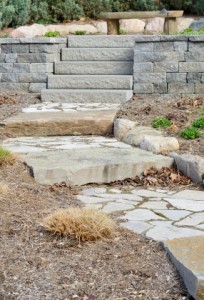 As a homeowner, you probably take pride in your grassy front yard. There’s no shame in this: For many homeowners, nothing says “I’ve made it” like a fenced-in patch of brilliant green grass.
As a homeowner, you probably take pride in your grassy front yard. There’s no shame in this: For many homeowners, nothing says “I’ve made it” like a fenced-in patch of brilliant green grass.
Unfortunately, San Antonio has been experiencing severe drought for several years on end, and forecasters expect the problem to continue. There’s a good chance that already tight city and county water restrictions will become even stricter: in nearby Austin, watering your lawn during the day is punishable by a $475 fine. Cut down on lawn care and get out in front of this looming problem with eco-friendly drought-resistant landscaping that uses native, drought-tolerant plants instead of water-guzzling grass.
What’s a Drought-Tolerant Landscape?
Also known as a “xeriscape,” drought-resistant landscaping is an area of landscaping that eschews moisture-loving varieties of grass in favor of water-sipping plant species like succulents, prairie grasses and desert-native shrubs. According to the University of Arizona’s Water Wise Program, the best way to figure out what to include in your home’s drought-resistant yard is to take a nature walk in an undeveloped area near your neighborhood.
What Should Your San Antonio Drought-Resistant Landscaping Include?
In the semi-arid San Antonio region, it’s possible to grow the Kentucky bluegrass that adorns millions of American lawns. However, San Antonio is notoriously drought-prone and faces the additional problem of sandy, nutrient-poor soil to which bluegrass isn’t naturally suited. If you’re a die-hard grass fan, consider using drought-resistant varieties like tall fescue and fine fescue. These use up to 50% less water than “regular” grass and are suited to the shadier corners of your lawn. For sunnier areas, native shrubs like juniper can provide shade for dozens of varieties of flowering cacti as well as drought-resistant herbs like lavender and sage.
Key Benefits of Drought-Resistant Landscaping
If you’re a landscaping buff, think of your drought-resistant landscaping as a full-yard garden. Many San Antonio homeowners use terraces to group similar dry-weather plant species and support non-living landscape features like rocks and stumps. Since they’re more diverse than regular grass lawns, drought-resistant yards tend to attract a wide variety of birds, pollinating insects, small mammals and reptiles. Since they don’t need to be mowed or watered on a regular basis, they’re also very low-maintenance.
Trying out a locally grown, environmentally friendly alternative to a grass lawn doesn’t require you to trade in your white picket fence. If you’re not already convinced that a native drought-resistant landscape will do your yard some good, give us a call at ABC Home & Commercial Services to speak with real San Antonio landscaping specialists who have years of experience.